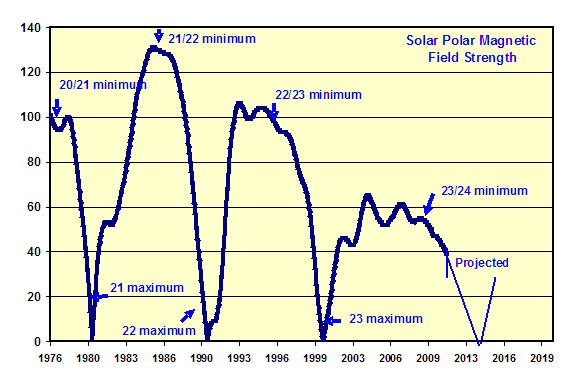I was directed to an excellent post by Walter Russell Mead today. It is on the subject of the American social model and the coming era of tumultuous social unrest as the old welfare state model collapses. Europe is already seeing this collapse as nations like Greece face bankruptcy and England deals with the consequences of severe cutbacks in social spending to avoid it.
The US is facing similar economic consequences if the level of spending is not addressed soon. The 2010 elections show that the people recognize the crisis but the “political class” seems less concerned.
“It’s telling to note that while 65% of mainstream voters believe cutting spending is more important, 72% of the Political Class say the primary emphasis should be on deficit reduction,” Rasmussen said.
“Deficit reduction” is code for raising taxes. Spending is heavily embedded in the culture of the political class.
Mead is concerned that the intellectual demographic, those with advanced degrees and careers denominated by thinking rather than doing, is unable to cope with the new situation.
There’s a lot of work ahead to enable the United States to meet the coming challenges. I’m reasonably confident that we remain the best placed large society on earth to make the right moves. Our culture of enterprise and risk-taking is still strong; a critical mass of Americans still have the values and the characteristics that helped us overcome the challenges of the last two hundred years.
But when I look at the problems we face, I worry. It’s not just that some of our cultural strengths are eroding as both the financial and intellectual elites rush to shed many of the values that made the country great. And it’s not the deficit: we can and will deal with that if we get our policies and politics right. And it’s certainly not the international competition: our geopolitical advantages remain overwhelming and China, India and the EU all face challenges even more daunting than ours and they lack our long tradition of successful, radical but peaceful reform and renewal.
No, what worries me most today is the state of the people who should be the natural leaders of the next American transformation: our intellectuals and professionals. Not all of them, I hasten to say: the United States is still rich in great scholars and daring thinkers. A few of them even blog.
His concern is that the intellectuals seem caught in a mind set that goes back to the 19th century and the Progressive Era.
Since the late nineteenth century most intellectuals have identified progress with the advance of the bureaucratic, redistributionist and administrative state. The government, guided by credentialed intellectuals with scientific training and values, would lead society through the economic and political perils of the day. An ever more powerful state would play an ever larger role in achieving ever greater degrees of affluence and stability for the population at large, redistributing wealth to provide basic sustenance and justice to the poor. The social mission of intellectuals was to build political support for the development of the new order, to provide enlightened guidance based on rational and scientific thought to policymakers, to administer the state through a merit based civil service, and to train new generations of managers and administrators.
It’s interesting that one of the comments, a lengthy one, exactly restates this issue but supports this model and argues with Mead that it is still superior.
Second, there are the related questions of interest and class. Most intellectuals today still live in a guild economy. The learned professions – lawyers, doctors, university professors, the clergy of most mainline denominations, and (aspirationally anyway) school teachers and journalists – are organized in modern day versions of the medieval guilds. Membership in the guilds is restricted, and the self-regulated guilds do their best to uphold an ideal of service and fairness and also to defend the economic interests of the members. The culture and structure of the learned professions shape the world view of most American intellectuals today, but high on the list of necessary changes our society must make is the restructuring and in many cases the destruction of the guilds. Just as the industrial revolution broke up the manufacturing guilds, the information revolution today is breaking up the knowledge guilds.
He goes on to criticize medicine as a guild but I think he is unaware of the rapid changes going on in medicine today. The image of the family GP is quickly shifting to the multispecialty group with primary care provided by nurse practitioners and physician assistants. Those who want a personal relationship with a primary care physician, or even a favored specialist, will increasingly be required to pay cash for the privilege as many doctors who want to continue this model of practice are dropping out of insurance and Medicare contracts because of the micromanagement and poor reimbursement.
In most of our learned professions and knowledge guilds today, promotion is linked to the needs and aspirations of the guild rather than to society at large. Promotion in the academy is almost universally linked to the production of ever more specialized, theory-rich (and, outside the natural sciences, too often application-poor) texts, pulling the discourse in one discipline after another into increasingly self-referential black holes. We suffer from ‘runaway guilds’: costs skyrocket in medicine, the civil service, education and the law in part because the imperatives of the guilds and the interests of their members too often triumph over the needs and interests of the wider society.
Almost everywhere one looks in American intellectual institutions there is a hypertrophy of the theoretical, galloping credentialism and a withering of the real. In literature, critics and theoreticians erect increasingly complex structures of interpretation and reflection – while the general audience for good literature diminishes from year to year. We are moving towards a society in which a tiny but very well credentialed minority obsessively produces arcane and self referential (but carefully peer reviewed) theory about texts that nobody reads.
Once again, costs in medicine are a subject by themselves but the solution does not lie in controlling doctors incomes. With respect to the academic institutions, I have personal experience here and will describe some of it. The Humanities have been hollowed out by a trend to both politicize and to leave the subject behind as “critical thinking” goes on to analysis that has little to do with it. The Sokol Hoax is but one example.
The Sokal affair (also known as Sokal’s hoax) was a publishing hoax perpetrated by Alan Sokal, a physics professor at New York University. In 1996, Sokal submitted an article to Social Text, an academic journal of postmodern cultural studies. The submission was an experiment to test the magazine’s intellectual rigor and, specifically, to learn if such a journal would “publish an article liberally salted with nonsense if it (a) sounded good and (b) flattered the editors’ ideological preconceptions.”[1]
The hoax precipitated a furor but did not result in much improvement in such publications. My daughter had personal experience when her freshman courses in English Composition and American History Since 1877 both contained numerous examples of political and “social justice” alteration of the subject matter. For example, she was taught that the pioneers in the west survived by “learning to live like the Native Americans.” The fact is that the pioneers were mostly farmers and ranchers and the Native American tribes of the southwest were hunter gatherer societies who did not use agriculture or animal husbandry. She was also taught that the “Silent Majority” of the 1960s were white people who rejected the Civil Rights Act of 1964. Thus they were racists. Even Wikipedia, no conservative source, disagrees:
The term was popularized (though not first used) by U.S. President Richard Nixon in a November 3, 1969, speech in which he said, “And so tonight—to you, the great silent majority of my fellow Americans—I ask for your support.”[1] In this usage it referred to those Americans who did not join in the large demonstrations against the Vietnam War at the time, who did not join in the counterculture, and who did not participate in public discourse. Nixon along with many others saw this group as being overshadowed in the media by the more vocal minority.
She has since transferred to another college.
The foundational assumptions of American intellectuals as a group are firmly based on the assumptions of the progressive state and the Blue Social Model. Those who run our government agencies, our universities, our foundations, our mainstream media outlets and other key institutions cannot at this point look the future in the face. The world is moving in ways so opposed to their most hallowed assumptions that they simply cannot make sense of it. They resist blindly and uncreatively and, unable to appreciate the extraordinary prospects for human liberation that this change can bring, they are incapable of creative and innovative response.
I think this is the source of the “media bias” so prominently referred to by the Right and by many who are not politically focused. This is why talk radio and Fox News have been such huge successes to the consternation of the political class and their supporters. Charles Krauthammer famously said, “Rupert Murdoch (owner of Fox News) found a niche market that contained 50% of the population.”
The Tea Parties are another manifestation of the frustration of the general population with the political class but also with the intellectual class that seems to be wedded to the first. The university community is, at least in the non-science segment of it, to be increasingly isolated from the concerns of the society that supports them. CalTech has for many years had a Humanities program to expose science and engineering students to culture. Unfortunately, a student in a large university will find much less culture and much more politics in Humanities departments these days.
A couple of other blog posts are worth reading on this subject. One is here and the other is here. They are both worth reading in full.


